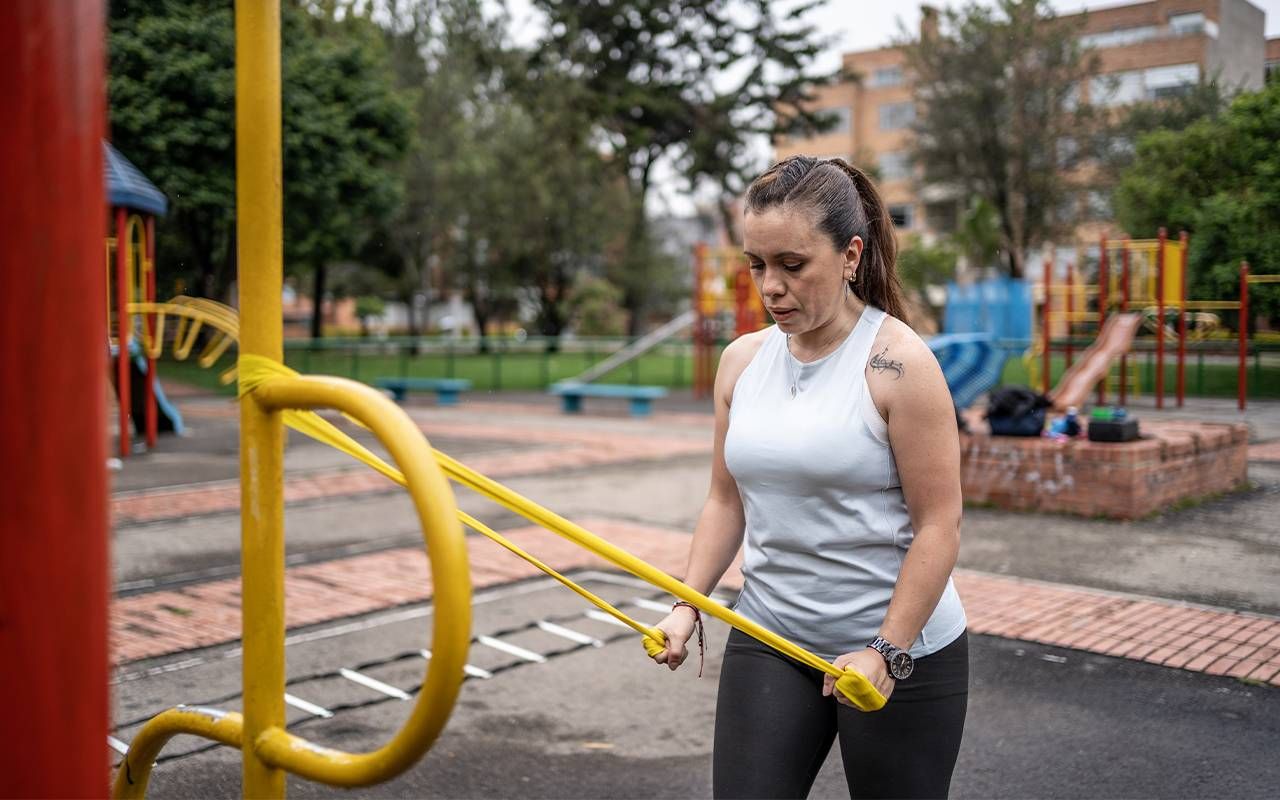The Benefits of Adding Strength Training to Your Workout Routine
Strength training can help improve your quality of life and reduce injury as you age
The National Institute on Aging (NIA) revealed 30% of adults over 70 have difficulty walking or climbing stairs and getting up from a seated position. Decreased muscle mass and strength typically occur after age 65 in women and age 70 in men.

Therefore, adding strength training to a regular workout routine can help maintain healthy body weight, reduce frailty, improve independence and decrease the risk of injury with falls or other accidents. Recent studies have also shown a lower risk of death from heart disease and diabetes by incorporating strength training.
Weightlifting is a common method of strength training, using free weights or gym equipment to target specific muscle groups.
But First, What Is Strength Training?
Strength training is also referred to as resistance training. Weightlifting is a common method of strength training, using free weights or gym equipment to target specific muscle groups. Additional strength training methods include resistance bands, medicine balls, bodyweight exercises and yoga.
Your muscles contract and work against the resistance to complete the exercise motion. Repetition of these contractions over time builds muscle and increases your strength.
Incorporating Strength Training Into a Workout Routine
The NIA recommends a frequency of twice a week for major muscle groups. Ensuring one day of rest between strength training is essential to avoid injury. Some of the exercises the NIA recommends include:
- Weight lifting
- Gripping a tennis ball
- Overhead arm curl
- Arm curls
- Wall push-ups
- Lifting your body weight
- Using a resistance band
You should check with your health care provider before starting any new exercise routines if you have any chronic health conditions.
Strength Training and Older Adults
The Office of Disease Prevention and Health Promotion has released the second edition of Physical Activity Guidelines for Americans. Specific information is provided for older adults, including those with chronic conditions. Critical guidelines for older adults include:
- Perform aerobic, balance and strength training exercises weekly
- Keep exertion effort within your fitness level
- Be as physically active as possible with less sitting throughout the day
For those with chronic conditions, these additional guidelines apply:
- Strength training of moderate intensity two or more days per week
- Consult with your health care provider before beginning any exercise routine
A few of the chronic conditions described in the guidelines include:
- Osteoarthritis
- Type 2 diabetes
- High blood pressure
- Cancer survival
Does Strength Training Impact Health?
Strength training helps chronic conditions in multiple ways. For those with osteoarthritis, building stronger muscles helps support fragile bones and joints and can decrease discomfort.
Your muscles contract and work against the resistance to complete the exercise motion. Repetition of these contractions over time builds muscle and increases strength.
Individuals with Type 2 diabetes can find strength training a valuable addition to their exercise routine for losing or maintaining weight. Reaching and maintaining a healthy weight positively impacts blood sugar levels. If you have high blood pressure, strength training increases the heart rate, which helps strengthen the heart muscle.
Further, individuals undergoing cancer treatment are often frail and have experienced muscle loss. Strength training can help regain that muscle and increase overall strength.
Stephanie Dixon, MSN, FNP-C, is a health care provider in North Carolina. When asked about strength training, she said, "Strength training is not about aesthetics; it should be essential for improving overall health and longevity as we age. It helps maintain muscle memory and provides a foundation for functional fitness to support balance, flexibility and stamina, making it crucial for aging individuals."
Sarcopenia is defined as diminished strength, muscle mass and function. The condition is common in older adults but can be seen in the middle age population. Individuals with sarcopenia may experience weakness, fatigue, and difficulty walking and standing. Sarcopenia may also contribute to an increased risk of injuries.
If you are overweight or obese, building the additional muscle mass needed to carry the extra weight is difficult. When we utilize diet and aerobic exercise to lose weight, we risk losing lean muscle mass and bone density.
Incorporating strength training into the weight loss program allows you to build muscle and reduce any loss of muscle mass. You will improve your mobility and overall activity as you lose weight and gain strength. Preventing bone density loss is an essential component of any weight loss program.
The INVEST (Incorporating Nutrition, Vests, Education, and Strength Training) in Bone Health trial focused on methods to decrease the risk of bone loss during periods of weight loss. Using weighted vests during weight loss was studied as part of the trial. As weight is lost, the amount lost is added to the vest for strength training.
How Can Strength Training Improve Your Life?
A recent study revealed 30-60 minutes of strength training per week resulted in decreased risk of death for individuals with cardiovascular disease and cancer. The risk for diabetes was shown to have its maximum impact at 60 minutes per week.
Strength training is a crucial part of any exercise regimen.
Exercising regularly has been shown to decrease depression, increase energy levels and improve cognitive function. The Centers for Disease Control and Prevention (CDC) created the Still Going Strong campaign in 2021. The campaign website contains information for older adults, caregivers and health care providers. It aims to increase or maintain physical activity without risk of injury. Unintentional injury is in the top ten causes of death for older adults.
Falls and motor vehicle crashes account for most of these deaths, often through brain injuries. Strength training can help with balance and coordination, along with improved muscle strength and mass. You will risk falling less by strengthening the hip and leg muscles. These effects can lead to a reduction in injuries for older adults.
According to Dixon, "Lean muscle mass not only supports our bone structure for injury prevention, but it also has a favorable effect on our metabolic health, improving insulin resistance, brain function and metabolism."
Strength training is a crucial part of any exercise regimen. The benefits of increased quality of life and decreased cardiovascular disease and cancer risk further emphasize this point. Improved strength, mobility and energy are some additional outcomes you can achieve. Work with your health care provider to ensure your planned regimen is appropriate.


